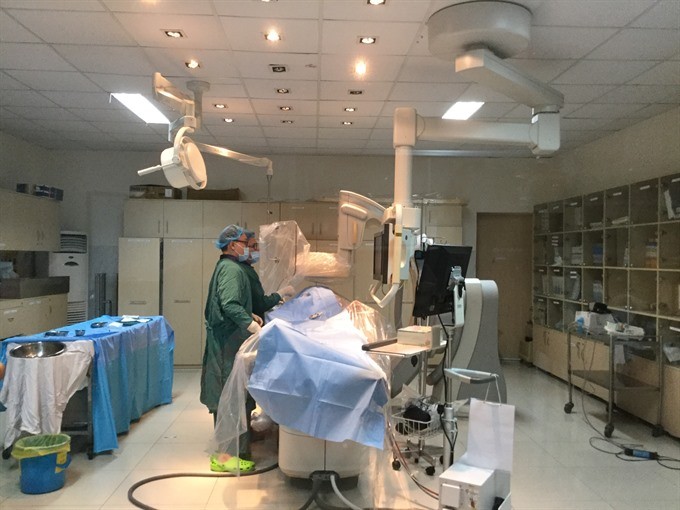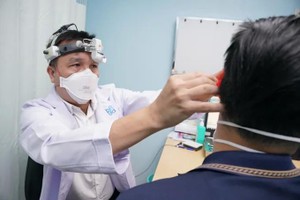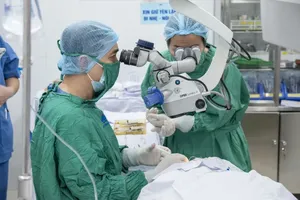
Endovascular intervention, which is a minimally invasive procedure performed in many countries in the world, is also becoming a more common treatment in Vietnam, according to experts.
Dr Cao Tan Phuoc, deputy director of Trung Vuong Hospital in Ho Chi Minh City’s district 10, told Vietnam News that the growing popularity of endovascular intervention is a necessary development in the country.
Trung Vuong Hospital, for instance, is performing more endovascular intervention to treat diseases such as hemorrhagic stroke resulting from a weakened vessel that ruptures and bleeds into the brain.
According to the American Stroke Association, hemorrhagic stroke accounts for about 13 percent of stroke cases.
Phuoc said: “Endovascular intervention is the best option for old patients with hemorrhagic stroke compared to open brain surgery.”
In the endovascular intervention procedure, small tube called a catheter is threaded up through a major artery and guided to the source of the bleeding to prevent further rupture and staunch bleeding.
The hospital’s doctors chose this method for a 81-year-old woman from the city’s Tan Binh district who was brought in with a limited loss of consciousness on April 28.
The tests and digital subtraction angiography (DSA) showed bleeding in the brain.
The patient was immediately brought to the hospital’s DSA faculty within thirty minutes, Dr Ngo Minh Tuan, the faculty’s head, said, adding that because the patient had many different diseases including chronic obstructive pulmonary disease.
“After discussing the treatment for the patient, the hospital’s doctors decided that if a surgery was performed on the patient postoperative care for her would be serious,” Tuan said.
That was the reason why they decided to perform a 90-minute endovascular intervention to stop the bleeding, he added.
After one week, the patient’s bleeding and brain swelling stopped, he said, adding that she is getting treatment for the different diseases she had before getting hemorrhagic stroke at the hospital.
Phuoc said that the intervention is a more minimally invasive procedure than surgery.
This procedure also is used to treat aneurism in leg arteries and diabetic complications such as atherosclerosis and others, he added.
Last week, the hospital’s doctors also performed an endovascular intervention to treat a patient who came in coughing up blood.
“In the past, they performed five or seven procedures of endovascular intervention every week whereas now two or three patients receive the procedure every day," he said.
According to doctors at Binh Dan Hospital in HCM City’s district 3, they have also successfully performed this intervention among many patients.
Last year, the intervention was performed on a 57-year-old man of district 7 with a hepatic artery aneurysm, a rare condition which only occurs in 0.002-0.4 percent of the population.
Dr Nguyen Chi Phong, deputy head of the hospital’s diagnostic image ward, said the aneurysm was in a location that was difficult to access. Endovascular intervention was the best choice and the safest for the patient.
In the case of late diagnosis, the aneurysm could rupture and cause death, he added.
According to Phuoc, early diagnosis and timely intervention are decisive factors to save patients and provide a good quality of living without disabilities.
Hospitals also need other well-developed departments such as the nervous system surgery department and an anaesthetic and recovery department to provide co-ordination for the DSA division in treatment, he added.
























